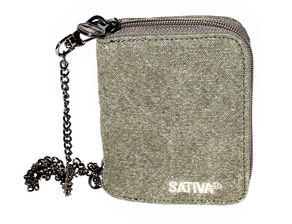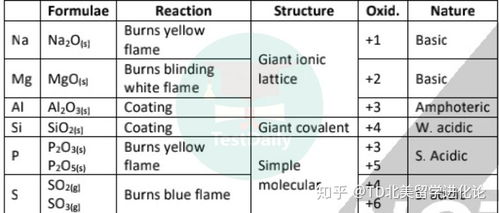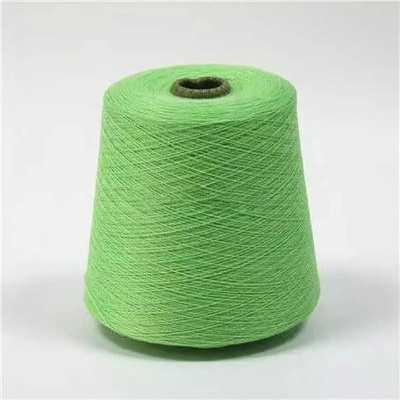Organic Textiles Invoice Notes:A Guide to Compliance and Best Practices
This guide aims to provide a comprehensive understanding of organic textiles invoice notes, highlighting the importance of adhering to regulations and implementing best practices. It covers various aspects such as the definition of organic textiles, the significance of invoice notes in ensuring compliance with international standards, and practical tips for creating and managing invoice notes. Additionally, it provides insights into the challenges faced by manufacturers and suppliers in complying with these regulations and offers valuable advice on how to overcome them. Overall, this guide serves as a valuable resource for anyone involved in the production or trading of organic textiles, helping them to ensure compliance and improve their overall efficiency and profitability.
Introduction
In today's world, consumers are increasingly seeking out products that are not only sustainable but also ethically sourced. This trend has led to a growing demand for organic textiles, which are produced using natural fibers without the use of harmful chemicals or synthetic additives. As a result, many businesses are now offering organic textiles as part of their product range. However, it is important for businesses to ensure that they comply with all relevant regulations and best practices when dealing with organic textile invoice notes.
In this guide, we will discuss some key considerations for creating effective organic textile invoice notes, including how to accurately describe the products, specify any certifications or labels, and include any relevant information such as production methods or environmental impact. We will also provide an example invoice note in English, along with a table to help illustrate key points.
Key Considerations for Organic Textiles Invoice Notes

Product Description
When writing an invoice note for organic textiles, it is essential to provide detailed information about the products being sold. This includes the name of the company, the type of organic textile, any unique features or benefits of the product, and any applicable certifications or labels. For example, if the organic cotton fabric is certified by the Global Organic Textile Standard (GOTS), it should be clearly stated on the invoice note. Additionally, it may be helpful to include a photo or description of the fabric to give potential customers a visual understanding of its quality and characteristics.
Certifications and Labels
Organic textiles often come with certifications or labels that indicate their origin and production methods. It is important to accurately describe these certifications and labels on the invoice note to ensure that customers have accurate information about the product. For example, if the organic cotton fabric is certified by GOTS, it should be mentioned on the invoice note. Similarly, if the organic wool sweater is made from recycled materials, it should be noted on the invoice note.
Production Methods
It is also important to include information about the production methods used to produce the organic textiles on the invoice note. This can include details about the sourcing of raw materials, the use of sustainable farming practices, and any other relevant production processes. For example, if the organic cotton fabric is grown using regenerative agriculture techniques, it should be mentioned on the invoice note. Additionally, it may be helpful to include a table or chart to help explain the production methods used in more detail.
Environmental Impact
As consumers become more aware of the environmental impact of their purchases, it is important to include information about the environmental impact of producing organic textiles on the invoice note. This can include details about the carbon footprint of the production process, the water usage involved in the manufacturing process, and any other relevant environmental factors. For example, if the organic cotton fabric is made from recycled materials, it should be noted on the invoice note. Additionally, it may be helpful to include a table or chart to help explain the environmental impact of the production process in more detail.
Example Invoice Note in English
[Company Name] [Date]
Dear [Customer’s Name],
Thank you for your recent purchase of our organic cotton linen shirts. We are pleased to inform you that we have carefully selected high-quality organic cotton fabric that meets all the necessary standards for our customers.
Our organic cotton linen shirts are made from 100% organic cotton fabric that is grown using regenerative agriculture techniques. The production process involves minimal use of pesticides and herbicides, ensuring that our products are not only eco-friendly but also ethically sourced. Additionally, we use sustainable farming practices to minimize our environmental impact during the production process.
The organic cotton fabric used in our shirts is certified by the Global Organic Textile Standard (GOTS) and meets all the necessary standards for organic textiles. We take pride in our commitment to sustainability and ethical sourcing, and we hope that you will continue to support us in our mission to create high-quality organic textiles that meet your needs.
Please find attached a copy of our invoice note, which includes all the information we have provided above. If you have any questions or concerns about our products, please do not hesitate to contact us at [contact information]. We look forward to hearing from you soon!
[Your Name] [Your Company Name] [Phone Number] [Email Address]

背景介绍
今天我们来聊聊有机纺织品发票备注的话题,随着环保意识的提升,越来越多的消费者开始关注产品的环保标签和认证信息,在购买有机纺织品时,发票备注是消费者了解产品信息的重要依据。
发票备注内容概述
在有机纺织品发票备注中,通常会包含以下信息:
- 产品名称与型号
- 供应商信息
- 有机纺织品的主要成分与来源
- 发票备注中的其他重要信息,如生产日期、保质期等
英文案例说明
以下是一个英文案例,用于进一步说明发票备注的重要性:
英文案例:
某消费者在购买有机棉质衣物时,收到了一张发票,其中详细列出了产品名称、型号、供应商等信息,并特别标注了有机棉的来源和认证情况,发票还提供了生产日期和保质期等信息,消费者通过查看发票备注,了解了产品的详细信息,包括产品的环保特性、质量保证等。
发票备注补充说明
在发票备注中,还可以补充说明以下内容:
- 环保认证信息:例如ISO 14001环境管理体系认证、欧盟有机认证等,这些认证信息可以让消费者了解产品的环保标准,增强消费者的购买信心。
- 税务政策信息:例如增值税发票备注栏中的税号、税率等信息,这些信息可以帮助消费者了解产品的税务情况,确保消费者的权益。
- 其他注意事项:例如产品尺寸、颜色、数量等信息,这些信息可以让消费者更好地了解产品的具体使用情况。
发票备注表格补充说明
以下是发票备注表格的补充说明内容:
| 项目 | 描述 | 示例数据 |
|---|---|---|
| 产品名称与型号 | 有机棉质衣物 | 产品名称:有机棉质衬衫 |
| 供应商信息 | XX公司 | 供应商名称:XX纺织有限公司 |
| 主要成分与来源 | 有机棉 | 来源说明:来自可持续种植的农场 |
| 环保认证信息 | ISO 14001环境管理体系认证 | 示例数据:已获得该认证 |
| 发票备注中的其他重要信息 | 生产日期:XXXX年XX月 | 生产日期标注:实际生产日期 |
| 保质期 | XX个月 | 保质期标注:产品有效期至XXXX年XX月 |
| 其他注意事项 | 无 | 无具体数据,仅列出一般性信息 |
我们可以看出,有机纺织品发票备注对于消费者了解产品信息具有重要意义,在购买有机纺织品时,消费者可以通过查看发票备注了解产品的详细信息,包括产品的环保特性、质量保证等,发票备注中还可以包含税务政策信息以及其他注意事项等信息,帮助消费者更好地了解产品的具体情况。
Articles related to the knowledge points of this article:
Dragonwell Medical Textile Factory:A Journey from Innovation to Quality
The Uniqueness of Textiles from Hunan Province



